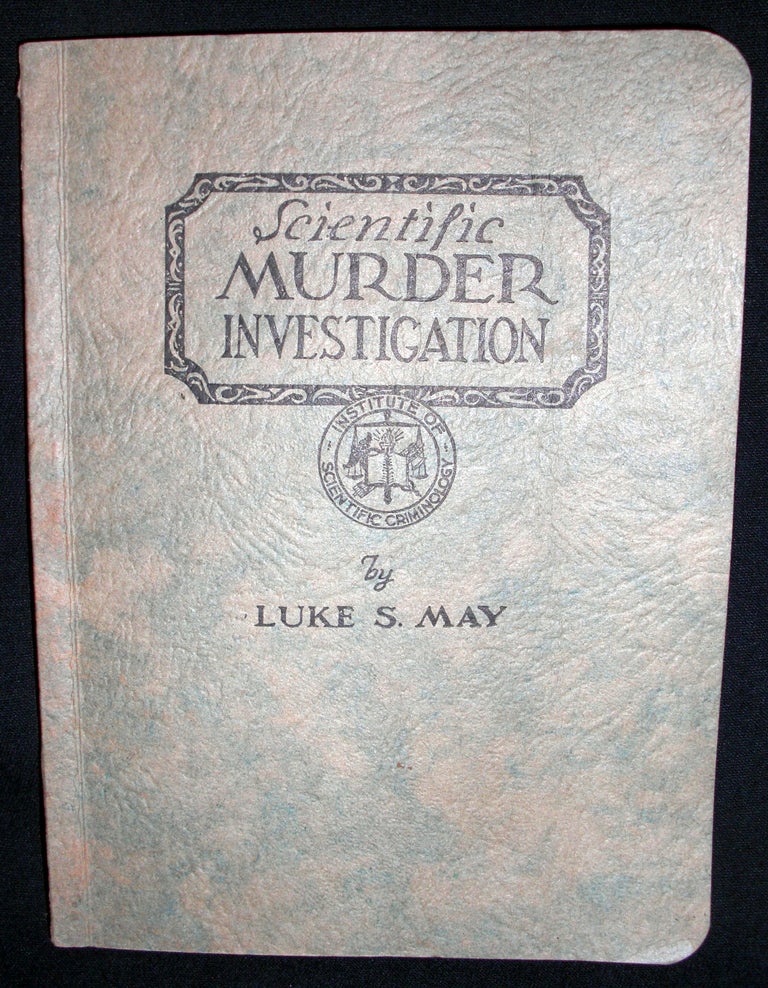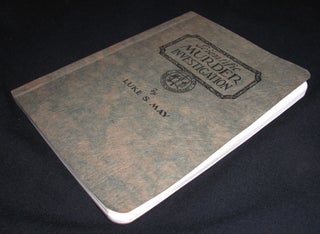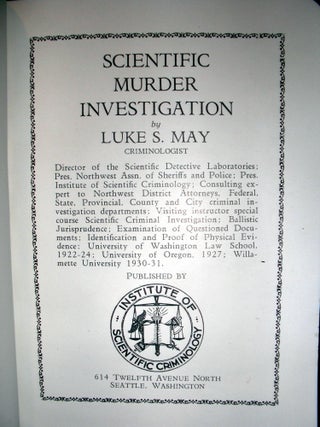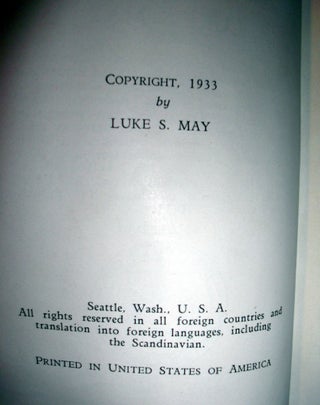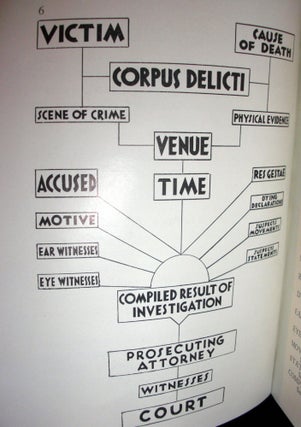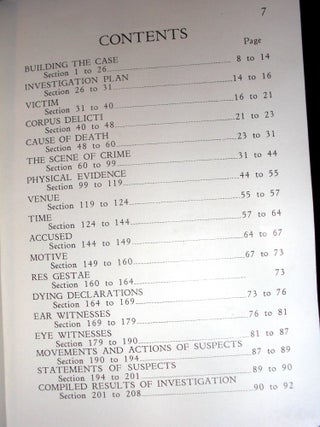Scientific Murder Investigation.
Seattle. Institute of Scientific Criminology. 1933. The First Printing. Illustrated with a Frontis depicting a protocol diagram of a murder investigation. 96pps. 32mo. 4.5"x6". Bound in titled, stiff board wrappers.
Luke S. May (1886-1965),was one of the earliest consulting scientific detectives. He was integral in the development of techniques, instruments, and facilities for scientific criminology and his pioneering work laid the framework for modern forensic investigation in the United States and around the world.
"May began as a private detective in Salt Lake City, Utah, shortly after the turn of the century and later established his own agency, the Revelare International Secret Service, which he moved to Seattle, Washington, in 1919. Although basically self-taught in scientific matters, May built a solid reputation among police agencies and attorneys in the Pacific Northwest and Western Canada as a serious and effective scientific investigator in the era before public crime laboratories. This reputation as "America's Sherlock Holmes" also led to his being consulted on the establishment of the first American crime laboratory at Northwestern University in Chicago, Illinois, and on a laboratory for the Royal Canadian Mounted Police at Regina, in Saskatchewan, Canada. He contributed to a landmark case of court acceptance of toolmark identification, invented specialized instruments, and founded an institute to teach scientific criminal investigation to police officers."
J Forensic Sci. 1992 Jan;37(1):349-55.
"In 1933, Luke May wrote a manual entitled Scientific Murder Investigation. May went so far as to outline a very distinct series of questions that should be answered in the inves-tigative process, but in leading his readers to these questions, he outlined the process of the investigation itself. May used a slightly different analogy, that of a building and the investi-gation, stating that without plan and direction, only the simplest of structures was possible. He likened the murder investigation to building a skyscraper; without planned effort and an underlying superstructure, successful completion of the investigation was impossible. May went on to state that the investigator must "develop other facts, correlating and interlocking to make a whole from apparently disassociated separate units.' May concluded that unless the investigator knew what to search for, there was little purpose behind the crime scene search. He warned of developing subjective personal theories and the all too common habit of trying to fit the pieces of the investigation into such theories rather than trying to obtain additional information that might lead to novel and more accurate theories. May felt that the true mark of the scientific investigator was one who could "work untiringly, obtaining facts upon which to predicate theories, changing his theories as the facts developed war-rant". May did not spell out a specific step-by-step crime scene analysis methodology, but his beliefs set a clear foundation for such a methodology. " Ross M. Gardner - Practical Crime Scene Processing and Investigation, Second Edition.
The slightest of usual thumbing to corners and front edge. A Fine, beautifully preserved copy of this renowned monumental manual of Modern Forensic Science.
Item #8840
Price: $1,500.00

